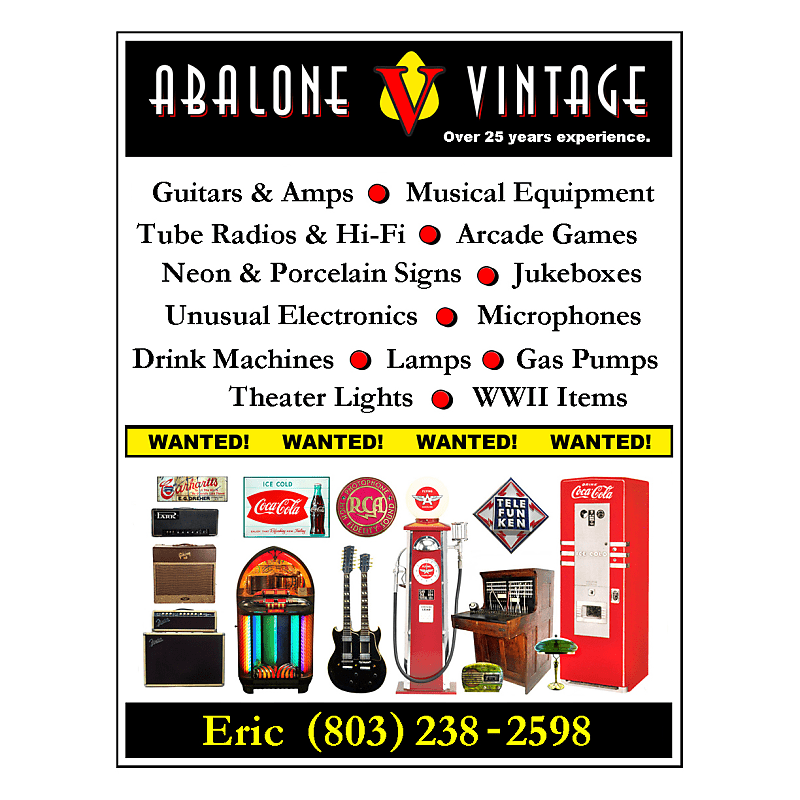Colors
The first Veleno bodies were made of 7075 aluminum, but these quickly tarnished and changed color. Veleno switched to 6061 aluminum which was then chrome plated. Eventually, in addition to the most common chrome finish, Velenos were offered in real gold plating, polished aluminum (similar look to chrome plated), plus anodized finishes of blue, red, green, gold and two blacks, ebony and "super finish." The super finish was a special process which yielded a harder finish that regular anodizing. This availability does not mean that Veleno guitars were necessarily produced in these colors. Chrome was the most common, with a few in gold and at least one in a black finish.
Occasionally Veleno would make his own bridges, although he sometimes used Gibson Tune-o-matics or Guild bridges. He actually preferred the way the Guild bridges adjusted.
Electronics on Veleno guitars were pretty straightforward. Typical controls consisted of two volume and two tone controls, two threeway mini-toggles (off in the middle, coil taps in the up position), and a mini-toggle phase switch. Since the guitars were made of aluminum, they were automatically shielded to reduce feedback.
Pickups
Pickups on the first few guitars were DeArmond humbuckers, but Veleno quickly switched to chrome-covered Gibson humbuckers, when he could get them. When he couldn't, he sometimes used Guild humbuckers, although he didn't care that much for their more trebly output. Somewhere between guitar #25 and guitar #50 Veleno was approached by Larry DiMarzio and asked to use his early pickups, which he did, when they were available.
Veleno guitars sold for $600.
At least one gold-plated Veleno Original was built with three DiMarzio pickups. This can be seen on page 95 of Tony Bacon and Paul Day's The Ultimate Guitar Book (Alfred A. Knopf, New York, 1991). This featured three volumes and three tones, three on/off mini-toggles under the knobs, three mini-toggles on the upper bout bass horn and a single mini-toggle on the lower horn.
The first sale
While the Jorge Santana connection was productive in terms of input, it didn't result in a sale. That would come shortly thereafter when John - using the same surreptitous entrance technique - went to a T-Rex gig, and made his first sale. Or actually first two sales.
Veleno recounts his meeting with the eccentric Mark Bolan with amusement. "I got into the soundcheck that afternoon," recalls John, "and started to polish my guitar. Mark Bolen came over to look at the guitar and asked me to go to his motel with him after the show. We went back to his room and he got down on his knees to inspect the guitar. He loved the guitar and said, 'I want two, one for me and one for my good friend Eric Clapton.'"
"Okay," said Veleno in a deadpan voice, who had no idea who Eric Clapton was.
"Don't you know who Eric Clapton is?," exclaimed Bolen in amazement. "My best friend is the greatest guitarist in the world."
"No," replied Veleno, thinking to himself that everyone says his friend is the best guitarist in the world. He'd heard that claim before.
Bolen began rolling around on the floor laughing hysterically. "I can't believe someone who makes guitars doesn't know who Eric Clapton is!"
Bolen gave Veleno the shipping address for the guitars, which was in care of Warner Brothers studios in California. "Gee," thought Veleno, "these guys really are in show business!"
"My daughter Michelle was in college at the time," adds Veleno, "and when I went home and told her I'd just sold two guitars to T-Rex and Eric Clapton, her awed response was 'Wow, Eric Clapton is the greatest rock and roll guitarist in the world!' I realized Bolin had been right. That's when I figured out that I'd better begin to read up on this stuff."

